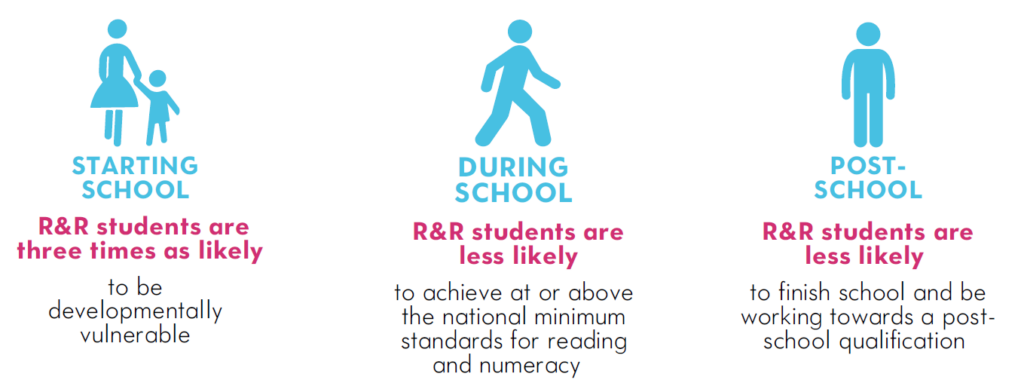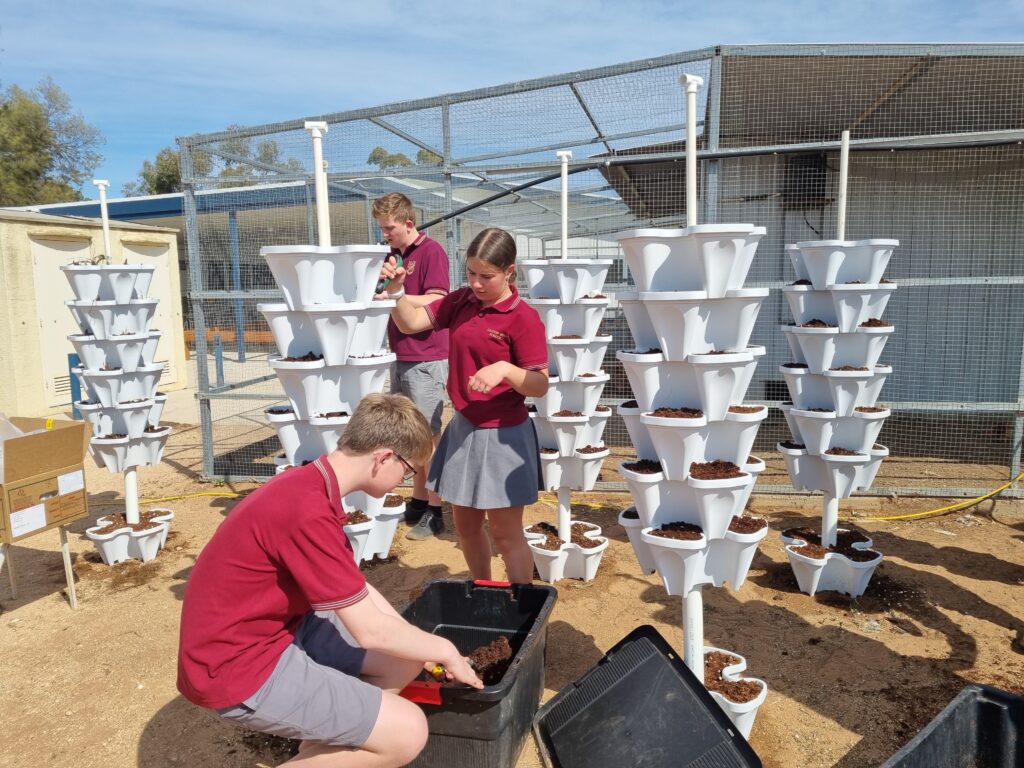The achievements of regional, rural and remote (RRR) students have lagged behind urban students for decades. There is a persistent relationship between location and educational outcomes.
RRR contributes to schools’ educational disadvantage in many ways. R&R schools tend to have a high teacher turnover, low retention rates, limited cultural facilities in the community, less confidence in the benefits of education, a lack of employment opportunities for school leavers, and a less relevant curriculum. (1)
Remote students have less positive dispositions towards school on every measure (belonging, self-confidence,
purpose and perseverance) than their regional and metropolitan peers.
The impact of regionality
RRR locations have a higher proportion of schools with educational disadvantage. Disadvantaged students, including RRR students, fall further behind each year they are at school. Bright kids in disadvantaged schools show the biggest
losses, making two-and-a-half years less progress than students with similar capabilities in more advantaged schools. (5)
R&R and learning outcomes

What drives the performance gap in rural and remote schools?
There are several factors that have been shown to be correlated with lower levels of student attainment:
- Socioeconomic status: Parents and communities in R&R areas tend to be less educated and less likely to hold professional positions.
- School size: R&R schools tend to be smaller with fewer resources, multigrade classes, and less teacher retention.
- Non-metro effect: differences in school culture and parental expectations in R&R areas. (8)
How Schools Plus helps schools to promote wellbeing?
Access to high-quality education is one of the most effective ways to ensure that students in RRR areas are prepared for their future outside of school.
Extensive research has shown that teachers have the most direct impact on student learning. A holistic approach, driven by a partnership between teachers and the community, and targeting both extracurricular and academic outcomes, can reduce education inequities.
Schools Plus works with schools in RRR areas to implement impactful and sustainable solutions that can bridge the gap between location and education outcomes by empowering schools with resources. Our strategic support helps with project design, implementation, and evaluation.
OUR PARTNERSHIP WITH LOXTON HIGH SCHOOL, SA

The Need: Recent droughts in the Riverland/Mallee region of South Australia, where Loxton High School is located, have resulted in lower job availability. Since the agriculture industry is a major employer in the area, staff at Loxton High School wanted to increase students’ understanding of emerging AgriTech developments. A review of the school curriculum found that students required more industry-specific and tech-focused practical learning.
Our support: The teachers and students set up a Farmbot and hydroponic system, and integrated this technology into curriculum areas, allowing students to monitor plant growth and learn about digital technology and sustainability. A greenhouse will also be established to facilitate the learning of horticultural techniques.
The impact: Student interest in robotics has increased extraordinarily, and the critical thinking, problem-solving, and communication skills of students have also increased. Students have a better understanding of farm technology and have built skills that they can translate into the workforce. Although the program is still in its beginnings, it has had a major impact on the school community, and there is considerable room for further progress
“The opportunities for students are limitless.”
For more information and sources, download our RRR report.
